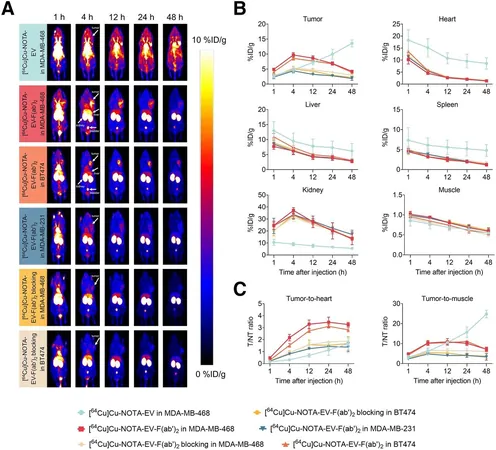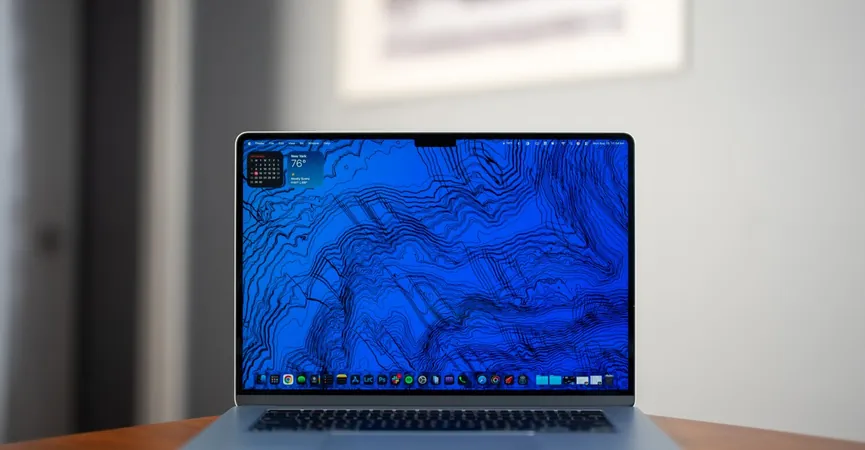
Revolutionary PET Tracer Promises Same-Day Imaging for Aggressive Cancers
2025-09-22
Author: Yu
A groundbreaking new PET tracer is set to transform the landscape for diagnosing triple-negative breast cancer (TNBC) and urothelial bladder carcinoma (UBC) by enabling imaging within just four hours! Published findings in the Journal of Nuclear Medicine highlight this cutting-edge advancement that could expedite treatment decisions and diminish patients' exposure to ineffective therapies.
Triple-negative breast cancer, an aggressive form accounting for nearly 24% of all breast cancer cases, poses significant treatment challenges. Meanwhile, urothelial bladder cancer, responsible for around 90% of urinary tract malignancies, often presents at advanced stages. This alarming trend underscores the demand for reliable early detection methods.
Targeting Nectin-4: A Game Changer?
At the heart of this innovation is Nectin-4, a protein frequently overexpressed in both TNBC and UBC, presenting a promising target for future therapies. Dr. Weibo Cai from the University of Wisconsin-Madison emphasizes the need for a reliable PET tracer to enhance patient stratification for these treatments.
"We aimed to create a PET tracer that delivers rapid and clear imaging of Nectin-4 expression, assisting in real-time therapeutic strategies," Dr. Cai explains.
Innovative Testing of Two PET Tracers
Researchers rigorously evaluated two PET tracers: 64Cu-NOTA-EV (linked with a full-length antibody) and 64Cu-NOTA-EV-F(ab′)2 (attached to a fragmented antibody). They assessed Nectin-4 expression in human TNBC and UBC cell lines using cutting-edge methods like flow cytometry and immunofluorescence.
Experiments involved immuno-PET imaging and biodistribution studies in mice with varying Nectin-4 expressions, revealing promising results.
Fast, Accurate Imaging: A Major Breakthrough!
The 64Cu-NOTA-EV-F(ab′)2 tracer showcased swift tumor accumulation and exceptional specificity in Nectin-4 positive tumors, peaking just four hours post-injection. This tracer marked a significant improvement in tumor-to-background ratios compared to its counterpart, allowing for rapid imaging with reduced radiation exposure.
Dr. Lei Kang of Peking University First Hospital highlighted that this study's outcome signals a promising future for non-invasive imaging techniques. "This method could extend beyond TNBC and UBC to encompass various cancers and molecular targets, making imaging faster, safer, and more patient-friendly," he remarked.




 Brasil (PT)
Brasil (PT)
 Canada (EN)
Canada (EN)
 Chile (ES)
Chile (ES)
 Česko (CS)
Česko (CS)
 대한민국 (KO)
대한민국 (KO)
 España (ES)
España (ES)
 France (FR)
France (FR)
 Hong Kong (EN)
Hong Kong (EN)
 Italia (IT)
Italia (IT)
 日本 (JA)
日本 (JA)
 Magyarország (HU)
Magyarország (HU)
 Norge (NO)
Norge (NO)
 Polska (PL)
Polska (PL)
 Schweiz (DE)
Schweiz (DE)
 Singapore (EN)
Singapore (EN)
 Sverige (SV)
Sverige (SV)
 Suomi (FI)
Suomi (FI)
 Türkiye (TR)
Türkiye (TR)
 الإمارات العربية المتحدة (AR)
الإمارات العربية المتحدة (AR)